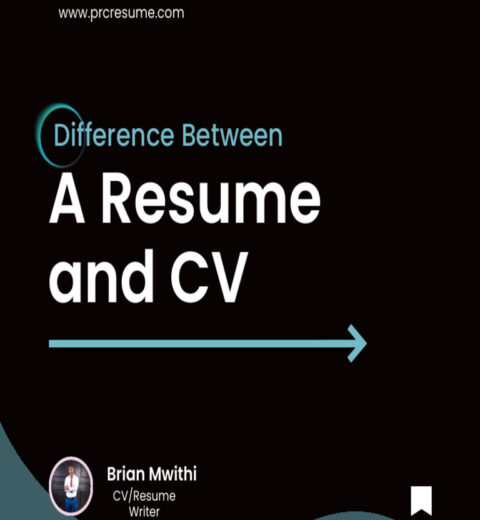In the hyper-digital landscape of 2025, where connectivity and digital presence are paramount, having a well-crafted LinkedIn profile is no longer merely advantageous; it is essential. One pivotal aspect of this profile is the resume, a fundamental document that encapsulates your professional journey, aspirations, and competencies. This guide will unravel the process of seamlessly uploading your resume to LinkedIn, transforming your profile into a magnet for potential employers and connections.
First and foremost, it is essential to recognize the significance of aligning your resume with your LinkedIn profile. The resume is not merely a static document; it is a narrative that conveys your professional ethos. LinkedIn allows you to present this narrative visually and interactively, thus elevating the way you communicate your qualifications. In 2025, this alignment is crucial in a world inundated with information, helping you stand out amidst the digital cacophony.
The initial step in this process is to log into your LinkedIn account. Ensure you have a robust internet connection and a reliable device. Once logged in, navigate to your profile by clicking on your profile picture or selecting ‘Me’ on the top menu. This will bring you to your profile page, where potential employers can scrutinize your professional persona.
After accessing your profile, look for the “Add profile section” button, typically located near the top of the page. Click on this, and a dropdown menu will present various options. In the context of uploading your resume, focus on the “Featured” section. This section is instrumental in showcasing your achievements and professional artifacts, including your resume.
Upon selecting the “Featured” option, you’ll notice a plus sign icon. Clicking this will open up a few options, one of which includes the “Media” feature. This is where the magic happens. Here, you can upload your resume directly from your device. Ensure that your resume is saved in an accessible format, such as PDF, which preserves the formatting and ensures that your document remains professional regardless of the device used to view it.
Once you select your resume file, a prompt will ask you to enter some details about your document. This is your opportunity to provide context for your resume. Consider giving it a classic title such as “My Professional Resume” followed by a brief description that highlights your career focus, skills, and what potential employers might glean from it. This descriptive text not only piques curiosity but also provides a succinct overview of your professional narrative.
After completing these steps, you can proceed to publish the changes. Your resume will now be a visible part of your LinkedIn profile, accessible to recruiters and connections alike. Yet, the act of uploading your resume is only the beginning. It is crucial to ensure that your LinkedIn profile complements and enhances the information contained within your resume.
Optimizing your profile requires attention to several key elements. First, your profile picture should convey professionalism and approachability. This image is often the first impression you give to potential employers, so choose one where you are dressed appropriately for your industry. Remember that in 2025, employers are not merely hiring a set of skills; they are seeking individuals who fit within their company culture.
The headline of your LinkedIn profile is another critical component. In 2025, generic job titles no longer suffice. Instead, opt for a descriptive headline that encapsulates your role and areas of expertise, thereby allowing for clarity and sparking interest. Something like “Digital Marketing Strategist Specializing in SEO & Content Marketing” is far superior to just stating “Digital Marketing Manager.” Specificity breeds curiosity.
Description sections, particularly the “About” section, should be meticulously crafted. Utilize this space to narrate your career journey, convey your passions, and outline your professional philosophy. This narrative can set you apart, allowing readers to understand not just what you have done, but why you do it. Incorporate keywords relevant to your industry, as this can improve your profile’s visibility in LinkedIn search results.
In 2025, networking transcends mere connections; it emphasizes relationships. Engaging with your network through regular updates, insightful posts, and thoughtful comments can augment your visibility. Share contents related to your expertise or burgeoning trends in your industry. Such contributions to the LinkedIn community can solidify your position as a thought leader, drawing more attention to your profile, and in turn, your resume.
Moreover, leveraging LinkedIn’s recommendations feature can further enrich your profile. Request brief endorsements from colleagues or supervisors that speak to your strengths. These testimonials add a layer of authenticity, reinforcing the claims made in your resume while enhancing your overall credibility.
As you navigate these changes in 2025, it is worth acknowledging that the digital workplace is evolving. More than ever, professionals must be adaptable and resourceful. Your resume on LinkedIn is not just about the job you currently hold but is a living document that should be regularly updated to reflect new skills, experiences, and accomplishments.
In conclusion, uploading your resume to LinkedIn is a multifaceted endeavor that extends beyond a simple upload. It necessitates a commitment to crafting a detailed and engaging profile that accurately reflects your professional essence. By harmonizing your resume with other aspects of your LinkedIn presence, you can effectively transform your profile into a powerful tool for career advancement. Embrace these strategies in 2025, and watch as opportunities unfold in unexpected ways. This is your time to shine in the digital realm.




